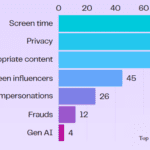Since emails came into our lives, we also gradually gotten introduced to spam. With the passage of time, spam became all types of communications that were unsolicited frequent instances of unknown people / organisations reaching out without someone’s permission.
The advent of IP technologies introduced a different variant of spam, known as SPIM or (Spam over Instant Messengers). We started getting unsolicited messages through instant messengers with a link to open something that looked irresistible. Soon we discovered these are all click baits and traps to scam us.
Recently, there has been a sharp increase in SPIT (Spam over Internet Telephony), perhaps for the first time in the history of communications. In this we are seeing virtual numbers being used to activate accounts on popular IP apps like WhatsApp, which are then used for making unsolicited calls to defraud people. These calls are mostly using an international number across different countries.
If we look at the recent instances, these are not technically spam messages. Rather they are an abuse to spam as well. The reason for this is spam is usually an unsolicited communication sent for advertisement to a fairly large potential audience that would include probable customers of such services and products. The point to note here is that these spam messages or calls were not meant for cheating or scamming people. As an example, one could receive an unsolicited call from a seller agency of a bank offering a credit card, loan, etc. Here, the intent of the caller is not to scam but to sell by randomly reaching out to someone whose contact details have been acquired through unfair practices and without taking any consent of the recipient.
But what’s happening now is not an attempt to sell something. These scammers send messages or call random people to cheat them and cause financial, emotional, or social harm. In this case it ceases to be spam, or for that matter other variants like SPIM or SPIT. These rogue communications are purposefully made for scamming and there is nothing to sell or offer other than a trap to result in a loss for an ordinary person receiving such messages or calls. Yes, it’s true that buyers beware, and these recipients are solely responsible for the consequences of entertaining such communications. However, the scammers in the field use very clever traps that are hard to doubt even for someone who could be having a fair idea of cyber frauds, etc. This can be established by the fact that we don’t see a specific socio-economic demographics of those being scammed. These could be from very rich, highly educated, tech savvy people to someone who is a senior citizen and does not know how to handle such situations.
The limited traceability and deterministically establishing the identity of anyone using IP technologies is a limitation of the technology, which has now graduated from being a potential disruptor technology to a default technology of communication. Today, most of our communication takes the IP route, be it voice, or video calls over WhatsApp, etc., sending emails, engaging over social networking platforms, or even in some cases termination of voice traffic originating through the PSTN lines.
This challenge or technological handicap can only be overcome if we collaborate and as a responsible ecosystem try to find out solutions and share information, rather than blame a few actors in the digital play. Till the time we are able to hunt something sustainable as well as preventive, we will have to live with this challenge. Welcome to the world of SCIM (Scam over Instant Messaging) and SCIT (Scam over Internet Telephony)!





One response
[…] Every day we come across media reports citing examples of online fraud where ordinary people are scammed of money by making them click on spoofed links and other means. Scammers, in disguise of a genuine person or brand send out messages using SMS, OTT communication apps like WhatsApp, Social Messaging apps and the age-old emails. Nowadays we have also seen calls being made out to fraud people. […]